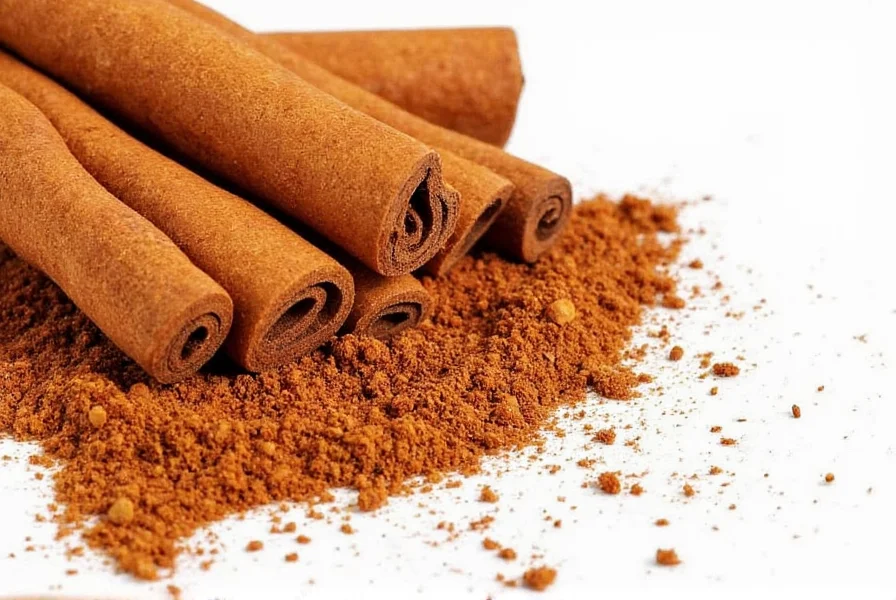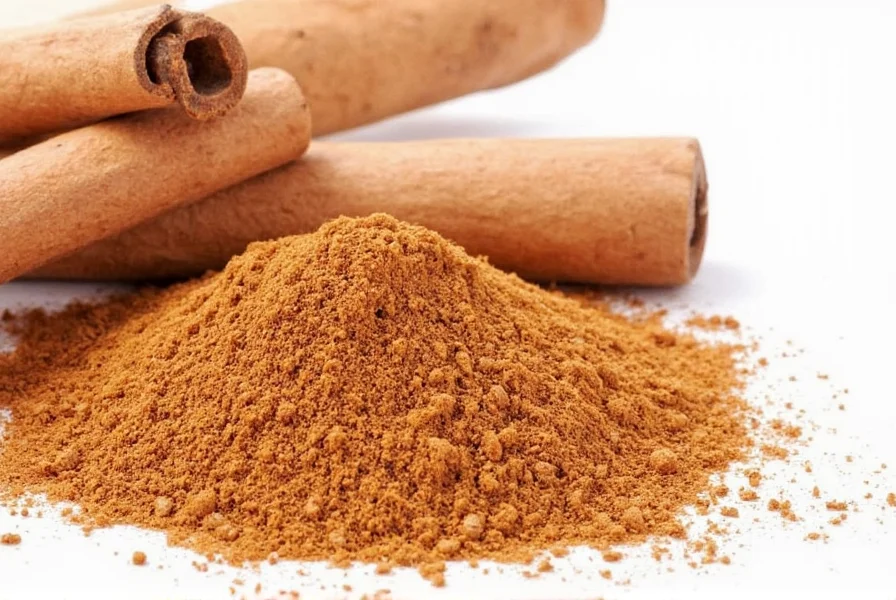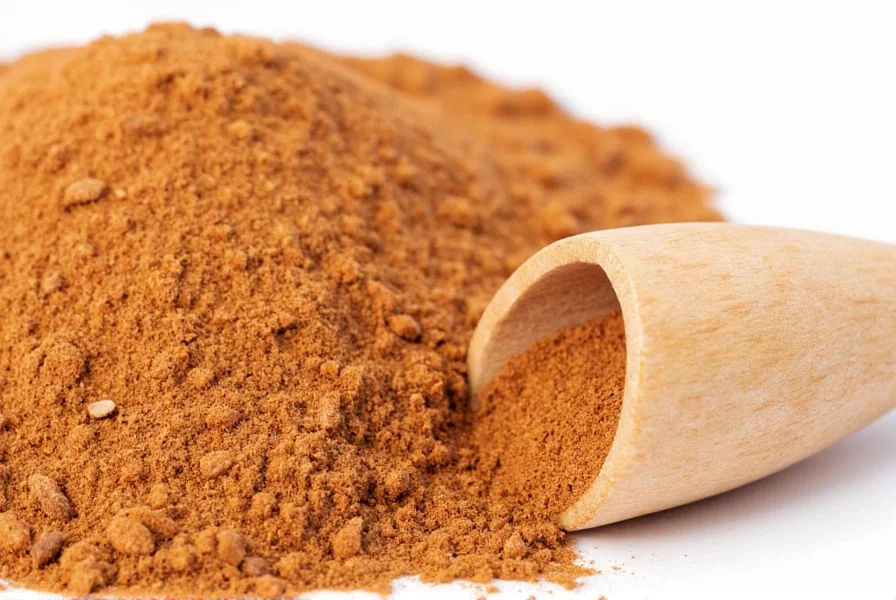Understanding this essential kitchen staple helps both novice cooks and experienced chefs maximize its flavor and nutritional potential. Unlike cinnamon sticks, ground cinnamon offers immediate flavor release and easier incorporation into recipes, making it indispensable for many culinary applications.
What Exactly Is Ground Cinnamon?
Ground cinnamon originates from the inner bark of trees belonging to the Cinnamomum genus. Harvesters strip the bark, which then dries and curls into quills (sticks). These quills undergo grinding to produce the fine powder known as ground cinnamon. The grinding process increases surface area, allowing for more immediate flavor release compared to whole sticks.
Two primary varieties dominate the market: Cassia cinnamon (most common in the United States) and Ceylon cinnamon (often called "true cinnamon"). The differences between these types significantly impact both flavor profiles and health considerations, particularly regarding coumarin content.
| Cinnamon Type | Origin | Flavor Profile | Coumarin Content | Common Uses |
|---|---|---|---|---|
| Cassia Cinnamon | China, Indonesia, Vietnam | Bolder, spicier, more intense | High (2.5-5%) | Baking, commercial products |
| Ceylon Cinnamon | Sri Lanka, Madagascar | Milder, sweeter, more complex | Very low (0.004%) | Delicate desserts, health-focused recipes |
Nutritional Value and Health Benefits
Ground cinnamon delivers more than just flavor—it packs a nutritional punch in small quantities. Just one teaspoon (2.6g) contains:
| Nutrient | Amount per Teaspoon | % Daily Value |
|---|---|---|
| Calories | 6 | 0% |
| Fiber | 1g | 4% |
| Manganese | 0.2mg | 8% |
| Calcium | 26mg | 2% |
| Iron | 0.2mg | 1% |
Research suggests several potential health benefits associated with regular ground cinnamon consumption. Its high antioxidant content, particularly polyphenols, helps combat oxidative stress. Studies indicate cinnamon may improve insulin sensitivity, making it valuable for those managing blood sugar levels. The anti-inflammatory properties of cinnamaldehyde, cinnamon's primary active compound, may reduce inflammation markers in the body.
When considering health benefits of ground cinnamon, remember that moderation matters. Consuming excessive amounts, particularly of Cassia cinnamon with its higher coumarin content, may cause liver issues in sensitive individuals. Most experts recommend limiting Cassia cinnamon to no more than 1 teaspoon daily for regular consumption.

Culinary Applications and Substitution Guidelines
Understanding how to use ground cinnamon in baking properly elevates your recipes significantly. This spice works exceptionally well in:
- Baked goods (cookies, cakes, muffins)
- Breakfast items (oatmeal, pancakes, French toast)
- Spice blends (pumpkin pie spice, garam masala)
- Hot beverages (coffee, hot chocolate, mulled wine)
- Savory dishes (Moroccan tagines, Middle Eastern rice)
When substituting between forms, remember that ground cinnamon vs cinnamon sticks requires conversion. As a general rule:
- 1 cinnamon stick ≈ ½ teaspoon ground cinnamon
- 3 inches of cinnamon stick ≈ ¼ teaspoon ground cinnamon
For those needing alternatives, understanding ground cinnamon substitution options proves valuable. Allspice offers similar warmth but with clove notes, while apple pie spice provides a comparable flavor profile. In a pinch, a mixture of nutmeg and cloves can approximate cinnamon's flavor.
Proper Storage Techniques for Maximum Freshness
Maintaining the quality of your spice requires proper handling. To preserve flavor and potency when considering proper storage for ground cinnamon:
- Store in an airtight container away from light and heat
- Keep in a cool, dark cupboard (not above the stove)
- Use within 6-12 months for optimal flavor (vs 2-3 years for sticks)
- Check freshness by aroma—diminished scent indicates lost potency
Ground cinnamon loses its volatile oils more quickly than sticks due to greater surface area exposure. For long-term storage, consider keeping it in the freezer in an airtight container, which can extend its peak quality period.

Safety Considerations and Recommended Intake
While generally safe, understanding the nuances of ground cinnamon nutritional value and limitations matters. The coumarin content in Cassia cinnamon warrants attention, particularly for:
- Individuals with liver conditions
- Those taking blood-thinning medications
- Pregnant women consuming large amounts
Ceylon cinnamon offers a safer alternative for regular consumption due to its significantly lower coumarin levels. When incorporating cinnamon into your daily routine for potential health benefits, ½ to 1 teaspoon of Ceylon cinnamon provides sufficient active compounds without safety concerns for most people.
Practical Applications in Everyday Cooking
Maximize your use of this versatile spice with these practical tips:
- Add to coffee grounds before brewing for natural sweetness
- Mix with sugar for cinnamon toast or dusting finished baked goods
- Stir into yogurt or smoothies for added flavor and health benefits
- Combine with cocoa powder for enhanced hot chocolate
- Add to savory tomato-based sauces for depth of flavor
When working with recipes that specify how much ground cinnamon equals one stick, remember the conversion ratio varies based on desired intensity. For subtle background notes, use the standard ½ teaspoon per stick. For prominent cinnamon flavor, increase to ¾ teaspoon.
Conclusion
Ground cinnamon remains one of the most versatile and beneficial spices available to home cooks. Understanding the differences between cinnamon varieties, proper usage techniques, and storage methods ensures you maximize both flavor and potential health benefits. Whether you're baking cookies, spicing morning oatmeal, or exploring savory applications, this ancient spice continues to earn its place in modern kitchens worldwide. By selecting the appropriate type and using it correctly, you can enjoy ground cinnamon's distinctive flavor while potentially gaining its numerous health advantages.
Frequently Asked Questions
What's the difference between ground cinnamon and cinnamon sticks?
Ground cinnamon provides immediate flavor release and easier incorporation into recipes, while cinnamon sticks offer slower flavor infusion and are better for simmering dishes. Ground cinnamon loses potency faster (6-12 months) compared to sticks (2-3 years). One cinnamon stick typically equals ½ teaspoon of ground cinnamon in recipes.
Which type of ground cinnamon is healthier?
Ceylon cinnamon is generally considered healthier for regular consumption due to its significantly lower coumarin content (0.004% vs 2.5-5% in Cassia). Coumarin in high amounts may cause liver issues. While Cassia has stronger flavor, Ceylon provides similar health benefits with less risk, making it preferable for daily use in larger quantities.
How should I store ground cinnamon to maintain freshness?
Store ground cinnamon in an airtight container away from light, heat, and moisture. Keep it in a cool, dark cupboard (not above the stove). For maximum freshness, use within 6-12 months. To extend shelf life, store in the freezer in a sealed container. Check freshness by aroma—fresh cinnamon should have a strong, sweet scent.
Can ground cinnamon help with blood sugar control?
Research suggests ground cinnamon may improve insulin sensitivity and help moderate blood sugar spikes after meals. Studies show 1-6 grams (½ to 2 teaspoons) daily may benefit those with type 2 diabetes, but it shouldn't replace medical treatment. The effect appears more pronounced with Ceylon cinnamon due to better tolerance for regular consumption. Always consult your healthcare provider before using cinnamon therapeutically.
What can I use if I don't have ground cinnamon?
If you need ground cinnamon substitution options, try: 1) Cinnamon sticks (use ½ teaspoon ground per stick), 2) Allspice (use half the amount), 3) Apple pie spice (1:1 ratio), or 4) A blend of nutmeg and cloves (¼ tsp nutmeg + ⅛ tsp cloves per teaspoon of cinnamon). Note that substitutes won't provide identical flavor but can work in a pinch for many recipes.











 浙公网安备
33010002000092号
浙公网安备
33010002000092号 浙B2-20120091-4
浙B2-20120091-4